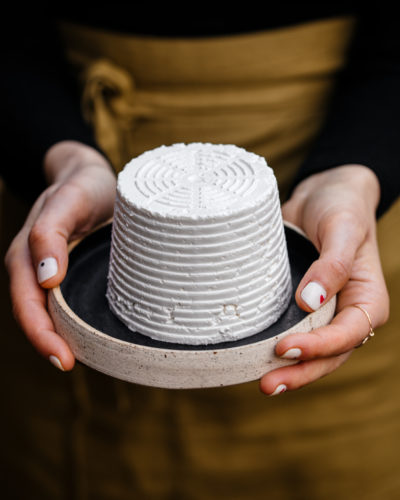
Recipe provided by Dates & Avocados.
Recipe for about 400 g of ricotta
Prep Time: 70 minutes
Cooking Time: 10 minutes (approximately)
Serves: 2
220 g (2 cups) raw almonds (see note*)
900 ml (4 cups) water
A generous pinch of pink Himalayan salt
30 ml (2 Tbsp) apple cider vinegar
2 large pieces of lemon peel (organic)
NOTE*: Prepare this recipe ahead. Weigh 220 grams of raw almonds and let them soak for at least 6 hours (or overnight) in an airtight container in the fridge. The soaked and drained almonds will weigh around 300 grams.
Recipe provided by Dates & Avocados.
Recipe for about 400 g of ricotta
Prep Time: 70 minutes
Cooking Time: 10 minutes (approximately)
Serves: 2
TIP To blanch the almonds, fill a pot with water and bring it to boil. Once the water is boiling, turn off the heat and add the almonds. Let them soak for 1 minute and transfer them to an ice bath. The skin will be very easy to remove: just rub them one by one between your fingers.
TIP Don’t discard the pulp! You can reuse it in many savory and sweet recipes. Blend it with dates, cacao powder, and superfoods and roll into protein balls or mix it with olive oil, lemon juice, herbs and spices to make a delicious “cream-cheese” spread.
TIP Secure the bag with tweezers or with a rubber band, so that it holds the weight of the ricotta. Make sure the bag doesn’t come in contact with the liquid dripping into the container.
TIP Don’t discard the whey! You can use it to enrich soups and stews, soak grains, cook pasta or rice, or as a substitute in any baking recipe that calls for water.
Sign up to receive a celebrity e-cookbook along with inspiring recipes, meal plans and more. All our resources are 100% free!
Already signed up? No need to register again, keep an eye on your inbox for your cookbook!
